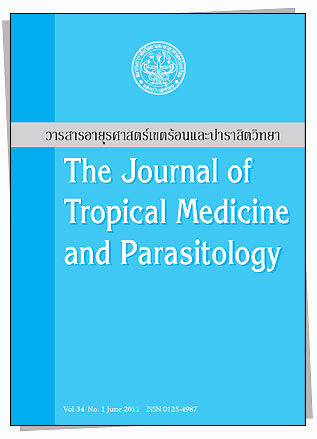Modification of Polyethylene Tube Culture Technique in Cultivation of Hookworm Larvae
Main Article Content
Abstract
Abstract
Cultivation is a good technique for obtaining hookworm larvae from a fecal sample. Polyethylenetube cultivation is practical for field studies, since the materials and prepared samples are easilyhandled during transportation. However, one limitation is the high cost of filter paper. If a suitablereplacement can be found, and clean drinking water can be used in the process, this method canbe used in remote areas where laboratory supplies are scarce. Four kinds of paper—filter paper, copypaper, paper towel, and absorbent paper, were tested for their comparative usefulness in harvestinghookworm larvae in normal saline, distilled water, and bottled drinking water. In each test, 330mg of feces from a hookworm-infected person were smeared onto the paper and retained in thepolyethylene tube with the designated water solution. The presence and number of larvae wereobserved at days 5, 7, and 10. It was found that copy paper and distilled water yielded the highestnumber of larvae. A low survival rate was noted at day 10. Therefore, for identification or furtherstudy, cultured hookworm larvae should be observed and collected on day 7.
Keywords: polyethylene tube, cultivation, hookworm larvae, copy paper, distilled water

